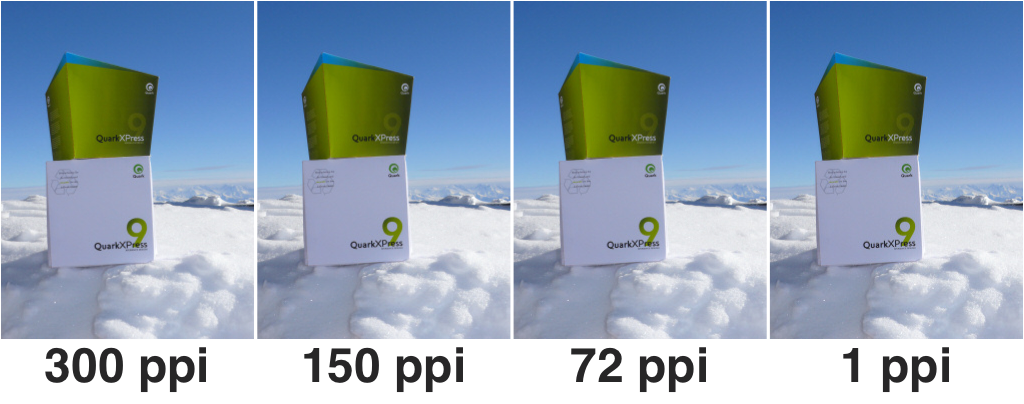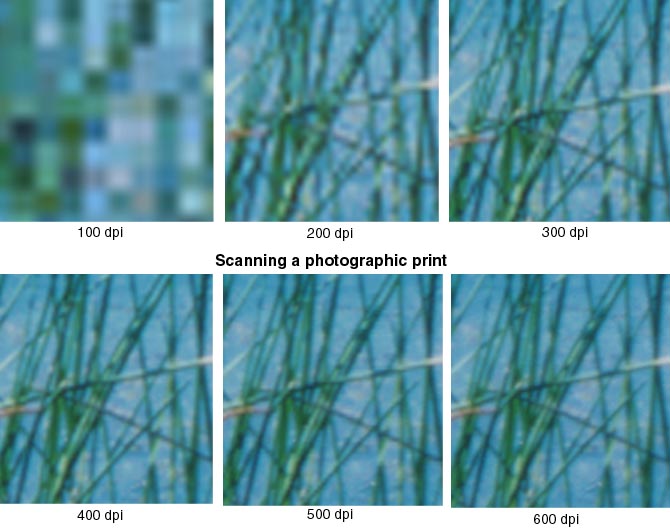Sure, you know what a pixel is, and you know what constitutes a high-resolution photo, but do you know what DPI is, and when to use it? You may think you do, but DPI isn’t as clear as you might think.
What is DPI?
DPI stands for “dots per inch”. Technically, “dots per inch” refers specifically to printed dots per inch, but DPI is commonly misused to refer to PPI, which actually stands for “pixels per inch”. This is because DPI is a largely old-school term – a hangover from when one pixel equaled one printer dot. This understanding of DPI is now completely irrelevant (and has been for decades) thanks to advances in printing and design technology. So if someone asks you to submit a design in 300 DPI, chances are, they really mean 300 PPI.
DPI really only applies to scanning now, where one scanned “dot” equals one pixel, but even the scanner is technically scanning PPI and only using the term DPI. Confusing, right?
When a client requests something in 300 DPI, most likely they are simply requesting a high-resolution design. The reality is that DPI has absolutely nothing to do with photo resolution or quality. Changing a photo from 72 DPI to 300 DPI does not affect the quality or resolution of your digital photo, and it can even cause the photo to lose quality in the printing process.

Hold Up – What’s PPI?
DPI and PPI are basically the same thing. The term DPI is often used to refer to PPI, and the term PPI is generally not used at all. Wonderful.
DPI/PPI refers to a digital photo’s pixel dimensions divided by the paper size on which your design is to be printed. Think about it like this: an inch on your computer’s screen is completely subjective. If you view your design at 50% zoom, one inch will contain very different information than an inch viewed at 300% zoom. But if you print your design onto a sheet of paper, an inch is an inch, no matter how you look at it.
Because of this, DPI/PPI really only applies to a printed design, and a digital photo as no PPI on its own.
How Do I Use DPI/PPI?
While DPI/PPI have nothing to do with digital image quality (as most people assume), they do have something to do with paper print quality. DPI/PPI is mostly useful for graphic designers working on “virtual paper” because it helps them determine what their print resolution could be for multiple printed sizes without having to use a calculator.
Most modern photo editing technology and other printing and scanning software will use DPI (not PPI, even though this is usually what they mean) as their dominant terminology, but don’t pay much mind to it. If you’re only editing a photo for digital use, remember that changing the DPI or PPI setting will not affect your digital image quality. However, they will affect the quality of a printed image if you’re designing for print.
So what DPI/PPI should you use? Somewhere between 200 and 300 is generally accepted to be a standard for creating a high-quality printed image, but this will ultimately depend on your pixel dimensions, and not what DPI or PPI you select. 300-600 DPI is often considered ideal for printed designs.
When Do I Have To Use DPI/PPI?
If a client requests a high-resolution photo or design, you should most likely concern yourself with pixels and pixel dimension, not DPI or PPI. A photo or design’s quality is dependent on the number of pixels it contains (among other things, none of which are DPI or PPI), and changing the DPI won’t do anything to affect your overall pixel dimensions.

Older photo editing programs may require you to change the DPI in order to change the size of your printed design, but newer software will not require this. Instead, all you have to do is plug in your desired print size, and the software will do all the work for you. And even when older programs say DPI, they really mean PPI. In fact, some programs will automatically resize an image when you change the DPI. This is bad, and can cause you to lose photo quality and your printer could even reject your designs. To avoid this, always click “maintain original size”, or deselect “resample image” when changing DPI.
Nowadays, DPI is really only relevant to scanning, where it’s used to adjust the amount of detail scanned. But even then, “DPI” is really referring to “PPI”. If you’re not sure what DPI to set your scanner to, remember that 200-300 is the standard for printed photo quality, so it’s a good base DPI for scanning high-quality images. The best quality can be gained from using 300-600 DPI.

So, What Actually Is DPI?
The easiest way to think about DPI is to think about it as a conversion factor used to set paper output dimensions. All DPI does is set these dimensions – in no way does it affect the quality of your digital image.
Generally, there’s no need to change the DPI unless your client specifically requests you to. In that case, follow these instructions for safely changing your DPI.
Sources
Watson, Ken. “What is DPI?“. All About Digital Photos.
Watson, Ken. “The Myth of DPI“. All About Digital Photos.



